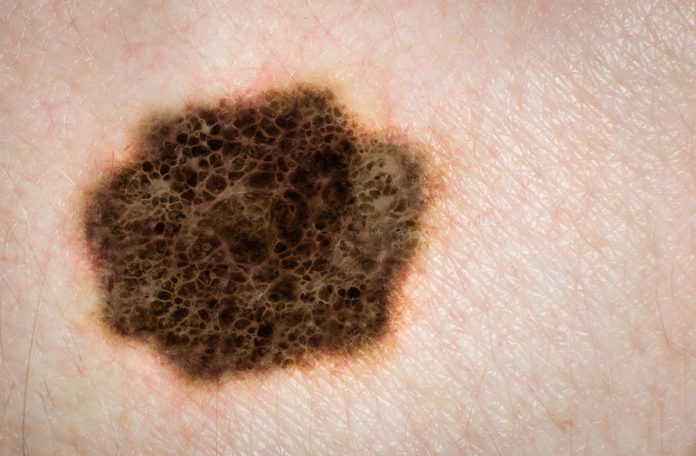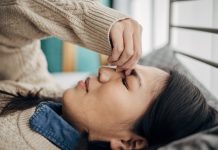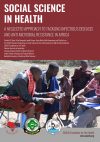Dr. Myrto-Georgia Trakatelli, Dermatologist and Chair of the Media & PR Committee at the European Academy of Dermatology and Venereology (EADV) highlights the growing problem of skin cancer…
The skin is the largest organ of the body; it’s our contact with the rest of the world. We can see it, we can touch it and we can feel with it. Any change to it can be accessed directly by a simple visual examination. Unfortunately most of the times we look but we do not see, or we see too late.
Skin cancer is the most commonly occurring cancer in Europe. On average, about 1 in 6 Europeans will get diagnosed with a skin cancer during their lifetime. The 3 most common types of skin cancer are the very common basal cell carcinoma (about 85% of skin cancer cases or 70-165 new patients per 100,000 persons), and the less common types: squamous cell carcinoma (about 5% of all skin cancer cases or 4-50 new patients per 100,000 persons) and cutaneous malignant melanoma (about 5% of all skin cancer cases or 10-24 new patients per 100,000 persons). The latter is by far the most aggressive type especially when it is detected belatedly and it accounts for the majority of skin-cancer related deaths.
The frequency of these cancers is increasing rapidly all over Europe – by several percentage points each year. This is due not only to population growth and ageing, but also to a real increase in risk factors. Since many cancer registries do not routinely collect and/or report information on the annual number of new patients with basal cell carcinomas and squamous cell carcinomas, little is known about the exact magnitude of the problem in Europe. Moreover, many patients with basal cell carcinomas tend to develop several of these tumours in their lifetime, but, generally, at most one of these tumours is reported by the cancer registry. This results in an under-counting of numbers of basal cell carcinoma patients by about 30% of the reported numbers, implying that we are only seeing the tip of the iceberg.
The real magnitude of the skin cancer problem is even larger than estimated at present and this has large implications for the costs and organisation of our healthcare systems.
This makes the need for raising public awareness extremely important. Skin cancer can be prevented through primary prevention – i.e. explaining to the public how to avoid these cancers – and also through secondary prevention favouring early diagnosis.
The most obvious reason for cutaneous cancer occurrence is over-exposure to ultraviolet radiation either from the sun or from tanning beds. In 2009, the International Agency for Research on Cancer classified the whole ultraviolet spectrum and indoor tanning devices as carcinogenic to humans (group 1) together with substances such as asbestos, arsenic, tobacco and plutonium. The rationale for classifying UV and sunbeds as group 1 carcinogens was based on convincing evidence both from basic and epidemiological research.
We live in a time where having tanned skin has become a lifestyle choice and this has contributed to the increase of skin cancer cases. Messages explaining the importance of avoiding excessive UV exposure should start in childhood during schooling and continue in adulthood by stressing the importance of the damage that can be inflicted to the skin from wanting to tan at any price.
Some good news is that skin cancers and precursors to skin cancer are relatively easy to treat if detected early enough. Here we come back to the concept of looking and actually seeing. People should be taught what they should look for so that they can see it and have it removed as soon as possible. Public campaigns such as Euromelanoma have been running for more than a decade in numerous European countries trying to raise awareness on the one hand and provide information on primary and secondary prevention on the other.
Skin cancer awareness campaigns have also been organised in the European Parliament for the last 4 years by the European Academy of Dermatology and Venereology (EADV) together with key opinion leaders such as the European Cancer Leagues (ECL), Euromelanoma and World Health Organization (WHO) aiming to inform on the various forms of skin cancer giving emphasis each time to a different politically important aspect of these malignancies. Members of European Parliament from various countries and parties have endorsed these campaigns, recognising the importance of these aspects and even addressing relevant questions about them to the EU commission.
The danger of UV exposure in outdoor workers was the main theme of the policy debate on the Skin Cancer Awareness Day 2015 that was hosted by Dr. Charles Tannock MEP, Vice President of the MEPs Against Cancer group of the European Parliament, an informal, all-party group of MEPs committed to policy action on cancer. The debate took place at the WHO Office at the European Union, in co-operation with EADV and ECL.
There is growing scientific evidence linking sun exposure in outdoor workers to the increasing incidence of skin cancer in this group. Outdoor workers appear to be at a 43% higher risk of basal cell carcinoma, and at a 77% higher risk of squamous cell carcinoma. This poses new challenges not only for the individuals concerned but also to employers, national health systems and social insurances. It has been calculated that in Europe more than 20 million workers are
UV exposed. Against this background, examples of recently enacted laws to protect outdoor workers at Member State level were discussed and the need for more targeted policy action at European level on decreasing the burden of occupational skin cancer was stressed.
Though there are definitely things that are progressing in the area of skin cancer in Europe, we should take the next step and go more than “skin deep” and to the “heart of the problem” by raising awareness, supporting research and registration, and implementing relevant legislation to protect the citizens. As dermatologists we are committed in this course and we are there to support our patients.
Dr. Myrto-Georgia Trakatelli
Ass. Professor of Dermatology and Venereology
Aristotle University of Thessaloniki, Greece
St. Pierre Hospital, Brussels, Belgium
Chair of the Media & PR Committee EADV
www.eadv.org

























